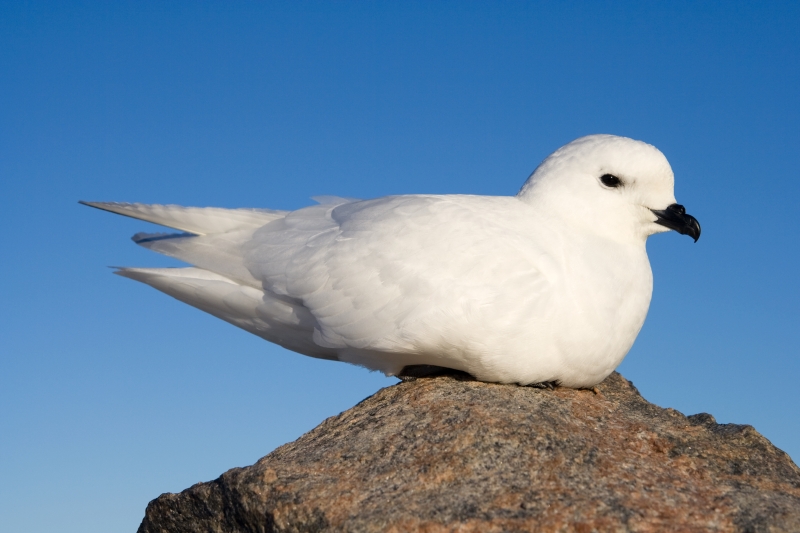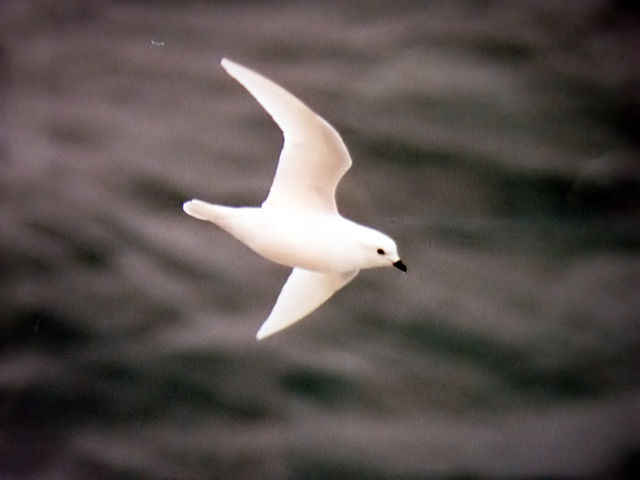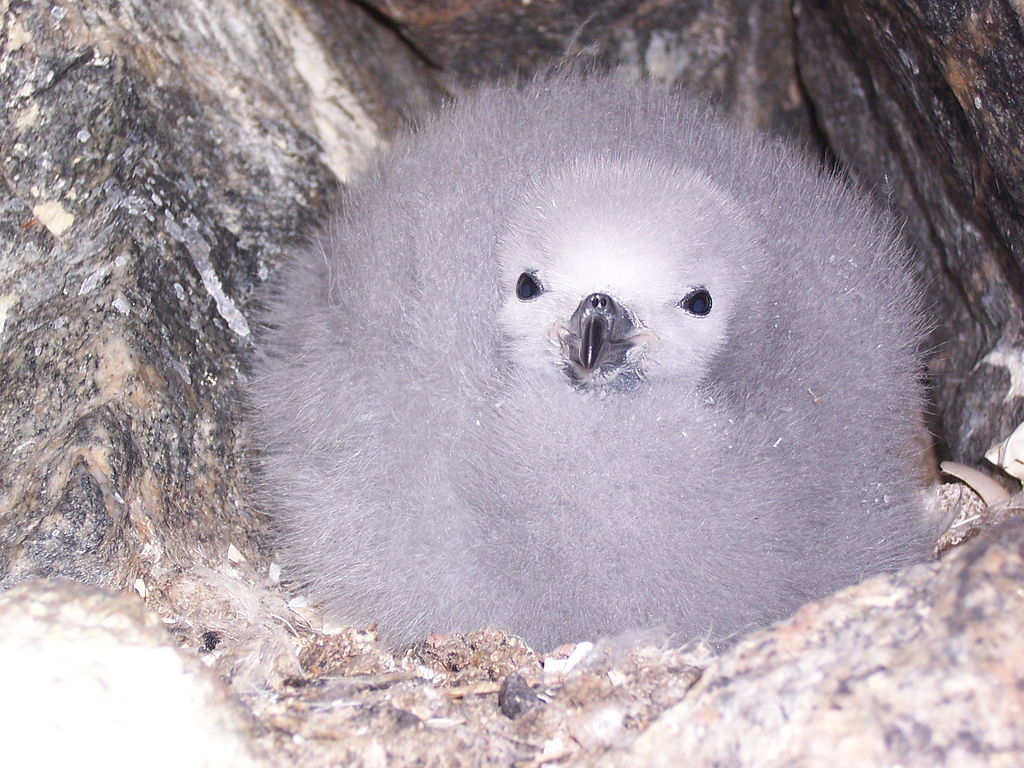Snow petrel
The snow petrel (Pagodroma nivea) is the only member of the genus Pagodroma. It is one of only three birds that breed exclusively in Antarctica and has been seen at the geographic South Pole. It has the most southerly breeding distribution of any bird.
With an occurrence range of 35,900,000 km2 (13,861,067 sq mi), and an estimated population of 4 million adult birds, the IUCN has classified this bird as least concern for conservation efforts.
Taxonomy
The snow petrel is the only member of the genus Pagodroma, and a member of the subfamily fulmarine petrels. They, in turn, are all members of the family Procellariidae, and the order Procellariiformes. They all share certain identifying features. First, they have nasal passages that attach to the upper bill called naricorns. The bills of Procellariiformes are also unique in that they are split into seven to nine horny plates. They produce a stomach oil made up of wax esters and triglycerides that is stored in the proventriculus. This can be sprayed out of their mouths as a defense against predators and as an energy-rich food source for the chicks and for the adults during their long flights. Finally, they also have a salt gland situated above the nasal passage which helps desalinate their bodies, due to the high amount of ocean water that they imbibe. It excretes a high saline solution from their nostrils.
Sub-species
The two subspecies are:
- P. n. confusa breeds on the South Sandwich Islands and Géologie Archipelago.
- P. n. nivea breeds on the Antarctic Peninsula, South Georgia Islands, and other islands of the Scotia Archipelago.
They differ in size, and the greater form has a stouter, larger beak.
Name
The issue of taxonomy and nomenclature for this species is complex, and represents an example of many of the unusual problems which arise from the varied use of the terminology.
The snow petrel was first named Procellaria nivea by Georg Forster, during Captain James Cook's third voyage in 1777. As Forster's mention of the petrel was only an observation, the authority of the name fell to Gmelin, in his Systema Naturae. Incidentally, a skin was procured by Cook, who noted this in his own account. J. R. Forster painted a picture of it, and made measurements, as well, but only the latter were published, posthumously, by M. H. K. Lichtenstein in 1844. While Gmelin was recognized as the authority for P. nivea until the early 20th century, the evidence has allowed for Forster to be construed as such, as he had created the name. In addition, Latham had described the type, which was in the Leverian Museum, but did not invoke Forster's scientific name for it.
Charles Lucien Bonaparte, in his Conspectus Generum Avium, volume II (1857), designated two subspecific binomial terms with no further descriptions to them: Pagodroma major and Pagodroma minor. Contrary to Mathews in Novitates Zoologicae (1934), the two names do not represent alternative, new names for P. nivea, but are subspecies, as well as nomen nudum, on account of their being listed similar to how other subspecies Bonaparte listed in the Conspectus. Bonaparte also created the generic name Pagodroma, in the Paris academic journal Compte Rendus (1856). James Francis Stephens (General Zoology, 1826) equated Pagodroma nivea in the genus Daption, Heinrich Reichenbach (Avium Systema Naturale, 1852) included it in the genus Thalassoica, and George Robert Gray (Hand-list of the Birds, 1871) included it in the genus Fulmarus.
Etymology
The word "petrel" is derived from Peter the Apostle and the story of his walking on water. This is in reference to the petrel's habit of appearing to run on the water to take off. Also, Pagodroma can be broken down as, pagos is Greek for "ice" and dromos for "a running course". Nivea is derived from Latin adjective niveus, -a, -um meaning "snowy". The snow reference is probably meant for its white color.
Description
The snow petrel, Pagodroma nivea, is a small, pure white fulmarine petrel with black underdown, coal-black eyes, small black bill and bluish gray feet.[8] Body length is 36 to 41 cm (14–16 in) and the wingspan is 76 to 79 cm (30–31 in). Flight is more fluttering than most petrels. They are known to live 14 to 20 years.
Behavior
Snow petrels are almost entirely restricted to cold Antarctic waters. Flocks are characteristically seen sitting on icebergs.
Breeding
Breeding occurs in colonies on the Antarctic Peninsula, and various Antarctic islands throughout Westarctica. Nesting is colonial in small to large colonies on cliffs, usually near the sea, but also inland. Some birds remain at the colony all year, but the main influx at colonies is from the mid-September until early November. Nests are simple pebble-lined scrapes usually in a deep rock crevices with overhanging protection. One white egg is laid between late November and mid-December. The egg is incubated 41 to 49 days and the chick is brooded for 8 days. They fledge 7 weeks later in late February to mid-May. Colonies are also the sites of cleaning areas where snow petrels, far from the sea, bathe in snow.
Snow petrel partners are faithful for life (around 20 years).
Feeding
Snow petrels feed mainly on fish, some cephalopods, mollusks, and krill, as well as carrion. During the winter, they disperse to the pack ice, ice floes, and the open sea. Flocks are characteristically seen sitting on icebergs. Only very rarely are they observed north of the pack ice.


